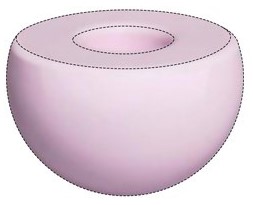Colors are generally permitted as source identifiers for trademarks or trade dress because they are typically perceived as an ornamental feature of a good or service (e.g. Louboutin’s red soles, T-Mobile magenta, Tiffany blue). However, this week, the Federal Circuit affirmed the Trademark Trial and Appeal Board (“TTAB”) decision cancelling trademarks protecting the “color pink applied to the entire surface of goods” of ceramic hip components. Specifically, the Federal Circuit reasoned that the color protected by CeramTec’s (registrant) marks were functional because the record demonstrated that CeramTec believed that the color was a result of optimizing that ceramic’s performance.

CeramTec manufactures artificial hip components used to replace damaged bone in hip replacement procedures. Those artificial hip components, which CeramTec calls “Biolox Delta,” are composed of a composition of a zirconia-toughed alumina (“ZTA”), which also includes compounds like chromium oxide (“chromia”). The amount of chromia within the ZTA affects the color of the product – which can be several varieties of colors, including “pink, red, purple, yellow, black, gray, [and] white[.]” In Biolox Delta’s case, CeramTec infuses its ZTA with exactly 0.33% by weight of chromia, which makes the product the pink color that CeramTec sought to protect. Despite the variety of possible colors of ZTA in hip replacement use, CeramTec acknowledged that its now-expired patents disclosed that its particular composition of ZTA “contributes to the overall hardness of the ZTA ceramic,” a desirable quality in hip replacement components. As such, CeramTec’s patents were strong indicators that the feature of 0.33% chromia by weight in ZTA, was functional. Likewise, the TTAB noted that CeramTec itself advertised Biolox Delta by advertising that chromia provides various functional benefits to ZTA ceramics. As a result of these two factors, the Federal Circuit affirmed the TTAB’s finding that the color pink was functional.
Color cannot serve as a trademark to the extent that it yields a utilitarian or functional advantage. TMEP § 1202.05(B) To extent there exists a competitive need for others in the same industry to use that color, a trademark registrant should not be permitted to bar the rest of the industry from using that color indefinitely, as such a monopoly would harm the public. Normally a color trademark or trade dress is cancelled for functionality where the color itself serves a purpose. For example, the color purple for sandpaper has been held functional, because abrasive manufacturers needed to use purple to indicate grit size. Saint-Gobain Corp. v. 3M Co., 90 USPQ2d 1425, 1446-47 (TTAB 2007). The color pink in the context of surgical wound dressings was also found functional because the color closely resembled Caucasian skin. In re Ferris Corp., 59 USPQ2d 1587 (TTAB 2000). In this case, however, the underlying color of a chemical composition was found to be functional, even though the color itself did not serve a function but was a byproduct of the functionality of the good itself. That said, CeramTec already enjoyed the benefits of its patents covering such a composition. Accordingly, industries reliant on innovative materials should continue to rely on a diverse intellectual property portfolio to properly protect its products.
